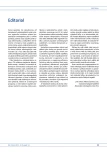Premalignant Conditions of the Small Bowel
Authors:
P. Drastich
Authors‘ workplace:
Klinika hepatogastroenterologie, IKEM, Praha
Published in:
Klin Onkol 2013; 26(Supplementum): 34-37
Overview
Small intestinal dysplastic lesions are rare and difficult to detect before they progress to cancer. New investigative modalities, such as capsule endoscopy and double‑balloon enteroscopy, are very promising in search for premalignant lesions. Screening patients at high-risk for small bowel neoplasia is the only sensible approach. Duodenal adenoma represents the most easily accessible tumors with the possibility of curative endoscopic resection. Due to the strong association of the small bowel and colonic adenomas, it is always necessary to perform colonoscopy. In young patients, the exclusion of familial polyposis by genetic testing is always mandatory. Patients with celiac disease are especially at risk of developing non‑Hodgkin‘s lymphomas and adenocarcinomas. There is a high-risk of ampuloma and other adenomas in patients with familial adenomatous polyposis. Patients with prolonged and complicated course of Crohn‘s disease, Peutz ‑ Jegher’s syndrome and patients with ileoanal pouch have higher risk of adenocarcinoma of the small intestine.
Key words:
small bowel adenoma – celiac disease – Peutz ‑ Jeghers syndrome – familial adenomatous polyposis – non‑Hodgkin’s lymphoma
The author declare he has no potential conflicts of interest concerning drugs, products, or services used in the study.
The Editorial Board declares that the manuscript met the ICMJE “uniform requirements” for biomedical papers.
Submitted:
10. 9. 2013
Accepted:
27. 9. 2013
Sources
1. Pennazio M. Small‑intestinal pathology on capsule endoscopy: tumors. Endoscopy 2005; 37(10): 1008 – 1017.
2. Rustgi A. Small intestinal neoplasms. In: Feldman M, Friedman LS, Sleisenger MH (eds). Sleisenger and Fordtran’s gastrointestinal and liver disease: pathophysiology, diagnosis, management. 7th ed. Philadelphia: Saunders 2002 : 2169 – 2174.
3. Lowenfels AB. Why are small‑bowel tumours so rare? Lancet 1973; 1(7793): 24 – 26.
4. Jepsen JM, Persson M, Jakobsen NO et al. Prospective study of prevalence and endoscopic and histopathologic characteristics of duodenal polyps in patients submitted to upper endoscopy. Scand J Gastroenterol 1994; 29(6): 483 – 487.
5. Alexander S, Bourke MJ, Williams SJ et al. EMR of large, sessile, sporadic nonampullary duodenal adenomas: technical aspects and long term outcome (with videos). Gastrointest Endosc 2009; 69(1): 66 – 73.
6. Genta RM, Feagins LA. Advanced precancerous lesions in the small bowel mucosa. Best Pract Res Clin Gastroenterol 2013; 27(2): 225 – 233.
7. Patel R, Varadarajulu S, Wilcox CM. Endoscopic ampullectomy: techniques and outcomes. J Clin Gastroenterol 2012; 46(1): 8 – 15.
8. Spigelman AD, Williams CB, Talbot IC et al. Upper gastrointestinal cancer in patients with familial adenomatous polyposis. Lancet 1989; 2(8666): 783 – 785.
9. Canavan C, Ambrams KR, Mayberry J. Meta‑analysis: colorectal and small bowel cancer risk in patients with Crohn’s disease. Aliment Pharmacol Ther 2006; 23(8): 1097 – 1104.
10. Sigel JE, Petras RE, Lashner BA et al. Intestinal adenocarcinoma in Crohn’s disease: a report of 30 cases with a focus on coexisting dysplasia. Am J Surg Pathol 1999; 23(6): 651 – 655.
11. Palascak ‑ Juif V, Bouvier AM, Cosnes J et al. Small bowel adenocarcinoma in patients with Crohn’s disease compared with small bowel adenocarcinoma de novo. Inflamm Bowel Dis 2005; 11(9): 828 – 832.
12. Veress B, Reinholt FP, Lindquist K et al. Prospective studies of the mucosa of the ileoanal pouch. Gastroenterology 1995; 108(3): 953 – 954.
13. Nilubol N, Scherl E, Bub DS et al. Mucosal dysplasia in ileal pelvic pouches after restorative proctocolectomy. Dis Colon Rectum 2007; 50(6): 825 – 831.
14. Frič P, Keil R. Celiakie pro praxi. Med Praxi 2011; 8(9): 354 – 359.
15. Elfström P, Granath F, Ekström SK et al. Risk of lymphoproliferative malignancy in relation to small intestinal histopathology among patients with celiac disease. J Natl Cancer Inst 2011; 103(5): 436 – 444.
16. Lebwohl B, Granath F, Ekbom A et al. Mucosal healing and risk for lymphoproliferative malignancy in celiac disease. Ann Intern Med 2013; 159(3): 169 – 175.
17. Leslie LA, Lebwohl B, Neugut AI et al. Incidence of lymphoproliferative disorders in patients with celiac disease. Am J Hematol 2012; 87(8): 754 – 759.
18. Al ‑ toma A, Verbeek WH, Mulder CJ. The management of complicated celiac disease. Dig Dis 2007; 25(3): 230 – 236.
19. Malamut G, Chandesris O, Verkarre V et al. Enteropathy associated T cell lymphoma in celiac disease: a large retrospective study. Dig Liver Dis 2013; 45(5): 377 – 384.
20. Potter DD, Murray JA, Donohue JH et al. The role of defective mismatch repair in small bowel adenocarcinoma in celiac disease. Cancer Res 2004; 64(19): 7073 – 7077.
21. Domizio P, Owen RA, Shepherd NA et al. Primary lymphoma of the small intestine. A clinicopathological study of 119 cases. Am J Surg Pathol 1993; 17(5): 429 – 442.
22. Arber N, Moschkowitz M. Small bowel polyposis syndromes. Curr Gastroenterol Rep 2011; 13(5): 435 – 441.
Labels
Paediatric clinical oncology Surgery Clinical oncologyArticle was published in
Clinical Oncology

2013 Issue Supplementum
- Metamizole in perioperative treatment in children under 14 years – results of a questionnaire survey from practice
- Metamizole vs. Tramadol in Postoperative Analgesia
- Safety and Tolerance of Metamizole in Postoperative Analgesia in Children
- Obstacle Called Vasospasm: Which Solution Is Most Effective in Microsurgery and How to Pharmacologically Assist It?
- Possibilities of Using Metamizole in the Treatment of Acute Primary Headaches
Most read in this issue
- Precancerous Conditions and Lesions of the Stomach
- Premalignancies of Colon
- Preinvasive Lesions in Gynecology – Vulva
- Precancerous Conditions in the ENT Area
